Over the recent Thanksgiving holiday, a number of images and videos of long waits at Tesla Supercharger sites were posted all over the internet and social media. One of the worst cases occurred at Tesla's flagship charging site in Kettleman City, California during Thanksgiving Week. Despite the Kettleman City site's 40 charging stalls (including a bank of 16 of Tesla's newest, fastest 250 kW "V3" Superchargers), at one point, it had a line of Tesla owners waiting to charge that was nearly a half mile long.
In stark contrast, my holiday travel along the same route in my Chevrolet Bolt EV on Thanksgiving Eve went completely without incident. My biggest concerns were beating a storm that was threatening to close the Grapevine on I-5 and reviewing two newly opened public charging sites. Otherwise, I had no issues accessing open chargers, and I only shared charging sites with one BMW i3 and one Hyundai Kona Electric.
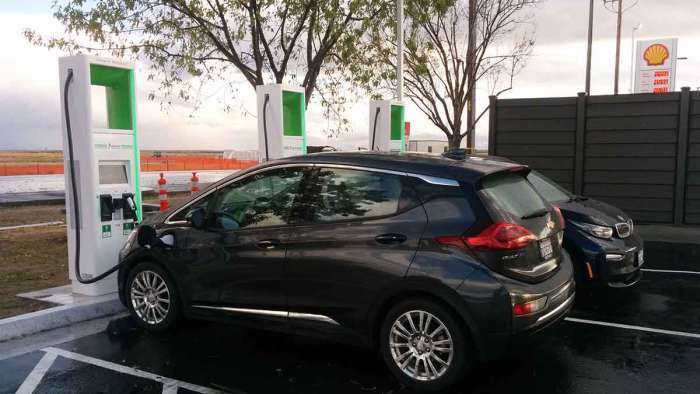
Tesla proponents are quick to note that this difference in experience is simply an example of Tesla's being a victim of their own success, but I disagree. These holiday and high-traffic queues are the direct result of a number of Tesla's strategic decisions, and they are, in my opinion, entirely preventable. Many of Tesla's early strategies for building out a fast charging infrastructure were successful, valid workarounds for constraints that they faced at that time; however, some of those decisions and strategies have now become a liability, and Tesla's current responses are both costly and unlikely to offer a long-term solution.
I am breaking this story into two parts. In this first part, I will describe exactly which decisions led Tesla to this point where thousands of their owners could now be affected by long waits to access Superchargers while traveling during. I'll also explain how Tesla's current strategies solutions might not be enough to fix these issues.
In the part two, I will share some of the things Tesla could due to quickly alleviate these issues for their, and I will explain why the most effective solutions will require Tesla to work with other automakers and charging providers.
History of the Tesla Supercharger Network
For Tesla owners, the Supercharger Network is, without question, the single best charging network with more DC fast charging sites and chargers globally than any other individual charging network. It has the most consistent fast charging speeds, and it is integrated with every modern Tesla's onboard navigation and route planning software (though this leaves Tesla owners somewhat ignorant of the public charging options available to them). Also, because the Supercharger Network only serves Tesla customers, it has the most streamlined and reliable access and payment systems. But it didn't get to this point overnight.
The Supercharger Network has been years in the making, and it's important to look at the decisions Tesla made to bring it to where it is today. Early on, Tesla had identified the single biggest pain point – arguably, the only pain point – for electric vehicle ownership: The ability to travel long distances in a consistent and convenient way. The two valid strategies for combating that are increasing the range of the electric vehicle and providing the opportunity to rapidly charge when traveling, but both of those strategies are expensive.
Given the restrictions on battery technology and pricing at the time, Tesla focused on the premium, small-car market in order to build electric vehicles with at least 200 miles of range (e.g., the first Tesla Roadster). In addition, Tesla started out by building a small number of public charging locations for Roadster owners, and their first attempt at a charging network actually mirrored what GM had done in collaboration with Magne Charge to create a small public induction charging network for the EV1 and Chevy S-10 EV.
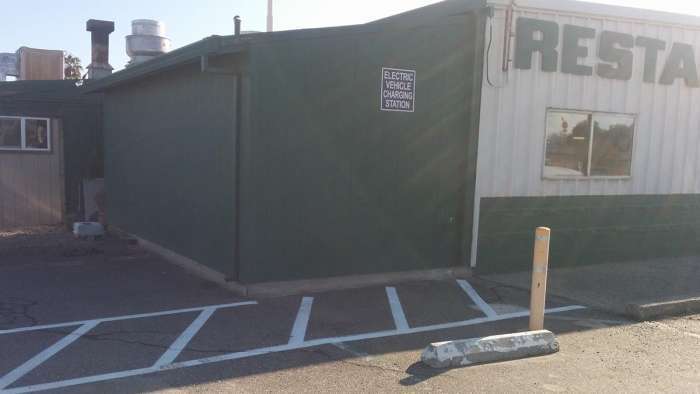
However, Tesla quickly abandoned that one-off, open-access AC charging pedestal model in favor of faster, restricted-access DC charging. To start breaking into the mass market, Tesla developed their Tesla Model S sedan. Despite being a much larger car than the Roadster, the Model S had longer range thanks to its aerodynamic sedan format and much larger battery (85 kWh versus 53 kWh in the Roadster).
As demonstrated by Motor Trend and Wide Open Throttle, these first Model S were capable of driving from the greater Los Angeles area to Las Vegas on a single battery charge (a feat I later replicated in my 2017 Chevy Bolt EV). Despite what was mostly a successful trip to Las Vegas, their journey illustrated the fact that, even with 285 miles of EPA rated range, electric vehicle owners would need access to fast chargers along key travel corridors.
Because Tesla was still working in the premium car segment, they were able to add an additional cost to their six-figure Model S that was earmarked for building their new Supercharger sites. Even for more affluent customers, adding several thousand dollars to the price of a car was a hard sell, so to incentivize the Supercharger option further, Tesla offered free use of Superchargers for the life of the vehicle.
Tesla is often criticized for this "free" Supercharging campaign, which they themselves have recently restricted; however, I think that strategy was perfectly valid, and I don't think it contributed to holiday rushes we are now seeing in any significant way. Generally, I think that crowdfunding is an effective strategy, and in this case, it's hard to argue with the results (the first continuous DC fast charging network to enable cross country travel). While there are some consequences of "free" Supercharging for the life of the vehicle, none of those affect holiday travel, so they are beyond the scope of this article.
With funding secured, Tesla set out to build a distributed network of charging sites, which meant building sites even in places with low or no electric vehicle ownership (an important detail that – based on a recent discussion I had with an Electrify America representative – the public charging providers still don't fully understand). Tesla also realized that having a single charging pedestal (as they had done for the Roadster) was not sufficient. Their sites needed to have a high enough concentration of chargers that immediate access to a charger is reasonably assured. Making larger sites also enabled Tesla to save money because the cost per charger goes down as more chargers that are installed at one site.
So Tesla did a great job achieving those initial objectives on a shoestring budget; however, as we are now seeing, the strategies that they employed are not sustainable. In the following sections, I'll discuss some of the consequences of the specific strategies Tesla employed in order to build a nationwide charging network that was faster than the public charging options at the time, was well-distributed along travel corridors, and had a high concentration of chargers per site. I'll explain how those strategies contribute to the holiday backlogs that we currently see at Tesla Supercharger sites.
Faster Charging Speeds
Tesla's goal for faster charging speeds is, in and of itself, a good thing; however, the way they achieved that goal with both their charging infrastructure and their vehicles has resulted in downstream impacts.
On my video channel, I defined a concept that I refer to as "subsequent charge range" or "SCR." When slow charging an electric vehicle (which is done 95% of the time at home or work), filling car's battery to its full, 100% range is painless. In day-to-day driving or for the first leg of a long trip, EV owners can count on the full range of their vehicle. However, things get a bit more complicated when those EV owners are traveling and need to charge while on the road.
In order to minimize overall travel times, electric vehicle owners should limit the amount of time their cars spend charging at lower than their fastest charging rates. That's where my SCR model comes into play. Simply put, SCR is the EV's range at the point when its DC fast charging speed drops below half of its peak charging speed. Charging beyond that point presents diminishing returns, and it should only be done if the additional range is absolutely crucial for reaching the next stop.
For most modern electric vehicles, SCR occurs between 60% and 80% battery; however, for Tesla's vehicles (which have more aggressive peak charging rates than most other vehicles), peak charging speeds start at about 5% battery and SCR can occur as low as 50% battery. That means that, even for Tesla's longest range electric vehicles (over 300 miles in several cases), the SCR range is only about 150 to 160 miles.
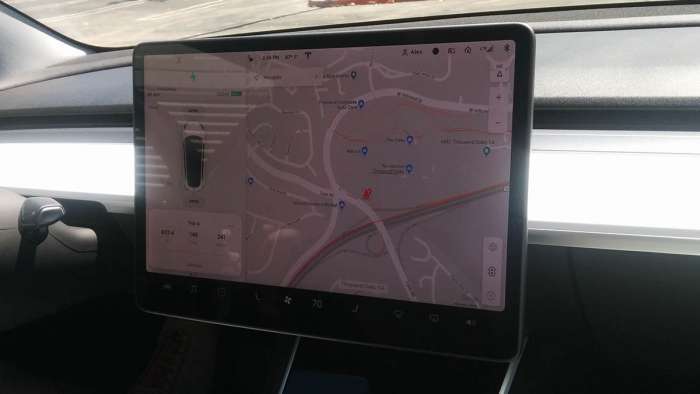
While there's nothing preventing a Tesla owner from charging for longer, the fact that charging to 80% battery takes twice as long as charging to 50% battery and charging to 100% battery takes twice as long as charging to 80% battery compels those owners to charge only long enough to make it to the next Supercharger. Also, in order to ensure the fastest charging rates, most Tesla owners are hoping to arrive at a Supercharger with between 5% and 10% battery. This practice makes those owners wholly dependent on the Supercharger site they are aiming for because they typically won't have enough energy to move to the next Supercharger if the site they arrive at is down or full.
On the surface, it might seem that restricting vehicles to their fastest charging rates and the shortest charging sessions possible to reach the next charger would reduce the overall load on the network; however, that only works when the network already isn't busy. How this plays out in reality is that these short charge cycles increase stress on the Supercharger Network by requiring Tesla drivers to interact with more sites during a journey. The result is a feedback loop that actually amplifies the load on key sites, and that load is then exacerbated by the way the Supercharger sites are distributed, which leave Tesla drivers with few or no other options upon arrival.
Distributed Nationwide Supercharger Network
Initially, Tesla needed to cover the largest geographical area they could with the fewest charging sites possible, and that means that the Supercharger Network sometimes has a 150 to 200 mile gap between sites, even to this day. Those long distances between sites combined with a relatively short SCR mean that Tesla owners are encouraged to stop at nearly every Supercharger site along their route.
In regions with high levels of Tesla ownership – such as Central and Southern California – Tesla has gone back and filled in many of the longer gaps. Examples include I-5 between Los Angeles and Sacramento and I-15 between Los Angeles and Las Vegas. However, despite that, effort, Tesla's Supercharger site distribution still leaves large gaps with only one or two charger sites to choose from in between.
For example, the gap between Tesla's Buttonwillow and Santa Nella Supercharger sites is 150 miles, and there are only two charging sites in between. Those sites (Kettleman City and Harris Ranch) are at the center of the gap with just under 30 miles separating the two (far enough, however, that a Tesla on 5% to 10% battery shouldn't risk the drive). The Kettleman City site has 40 stalls (24 shared 150 kW stalls and 16 dedicated 250 kW), and the Harris Ranch site has 18 shared 150 kW stalls.
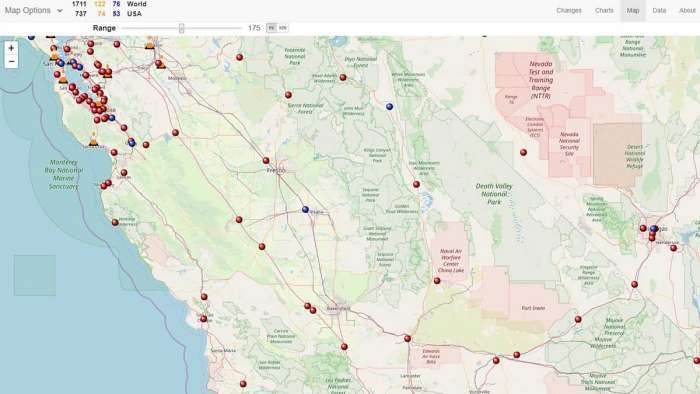
So not only are there only 58 stalls to support every Tesla that travels north or south on I-5 between Buttonwillow and Santa Nella, there is a significant disparity in the perceived quality of those two sites. Essentially, if someone is driving a Tesla capable of charging at faster than 150 kW or they are hoping to avoid a queue by choosing the largest site, they will prioritize a site like Kettleman City above a site like Harris Ranch. The result is, Tesla has created a focal point in their network, and that site will inevitably be overrun during peak travel times.
But it's not just about the I-5 corridor. A friend was actually stuck in a similar backlog at the Fresno Supercharger, which is along Highway 99 – a route that runs parallel to I-5 through Central California. This is where Tesla's relatively poor site distribution on a regional level becomes even more apparent. The Fresno Supercharger is Tesla's only site for nearly 250 miles along Highway 99 between their Manteca and Tejon sites.
High-Concentration Sites
Tesla clearly understood that having fewer charging sites spread farther apart would increase the load on individual sites, so they emphasized creating sites with a high concentration of chargers. However, in order to build high-density charging sites in a cost effective way, Tesla split each of their chargers (referred to as "cabinets") into two "stalls." Technically, both stalls can be active at one time, but neither stall will see peak charging rates (one stall will only be capable of significantly slower speeds).
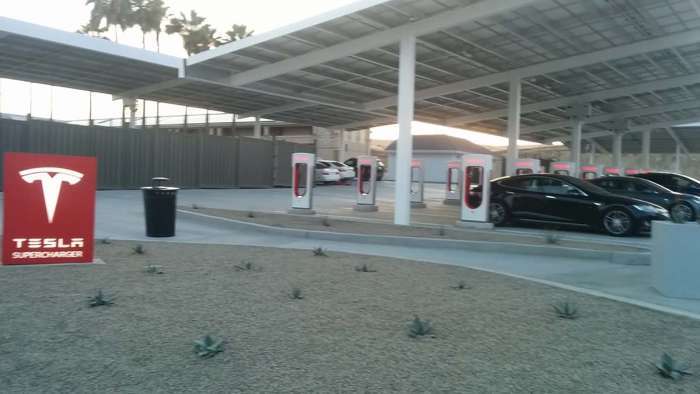
In the best of times, it is a brilliant marketing strategy that enabled Tesla to claim that their two Supercharger stalls with a shared 150 kW charging cabinet was vastly superior to public charging sites, even though – when both Supercharger stalls are occupied – two stalls are functionally similar to a public charging site with two 62.5 kW DC fast chargers. So when things get busy at a Supercharger site, Tesla owners are forced to face the harsh reality that those individual "150 kW" charging stalls are really splitting power.
For the shared stalls, the difference in the math between having a 150 kW charging cabinet to yourself and sharing it with another Tesla owner is fairly straightforward. What would typically be a 15 to 30 minute charging session when a stall is not shared could turn into a 30 minute to 1 hour charging session when two Teslas are charging on the same cabinet, which doesn't count the time spent waiting to get to the charging stall in the first place.
The result is that, as everyone's charging rate slows, they spend longer at the charger. That leaves more time for additional Tesla owners to arrive, who immediately take stalls as they become available. This maintains the overall longer charging times, which continue snowball until a long line of Tesla owners eager to charge forms. What is more, in some cases where the transformer linking the Supercharger to the grid forms a bottleneck, Tesla owners have reported charging rates limited to 25 kW (just one tenth the peak charging rate of the fastest charging Teslas) when the entire site was occupied.
V3 Superchargers to the Rescue?
Clearly Tesla has identified these split charging cabinets as an issue, so they have continued to evolve from that initial shared charging stall model. They now offer what they refer to as their "V3" Superchargers, which are standalone 250 kW chargers. Because these chargers do not share power, they effectively double the charger count, so even Tesla vehicles that cannot take advantage of the full 250 kW charging rate of the V3 Superchargers see a direct benefit.
But are V3 Superchargers alone enough to solve Tesla's holiday backlogs? Sadly, probably not.
While Tesla is still in the process of deploying these faster chargers, their Kettleman City Supercharger was already outfitted with a bank of 16 of these V3 Superchargers prior to this most recent Thanksgiving holiday backlog. That bank of chargers likely had a small positive impact on the length and severity of the backlog at Kettleman City, but even if the site was upgraded to 40 V3 Superchargers, it wouldn't solve the overpopulation problems that Tesla is dealing with.
Things Will Get Worse Before They Get Better
Unfortunately, based on what I see, no matter what Tesla does on their own in the near term, these holiday Supercharger site backlogs are going to continue and (in all likelihood) get worse. Even increasing the speed and number of chargers (whether by converting V2 to V3 Superchargers or by rolling out temporary charging stalls) won’t completely offset the issues caused by dispersed sites that act as high-traffic focal points in the Supercharger Network and continued high-volume sales of lower range Tesla Model 3s.
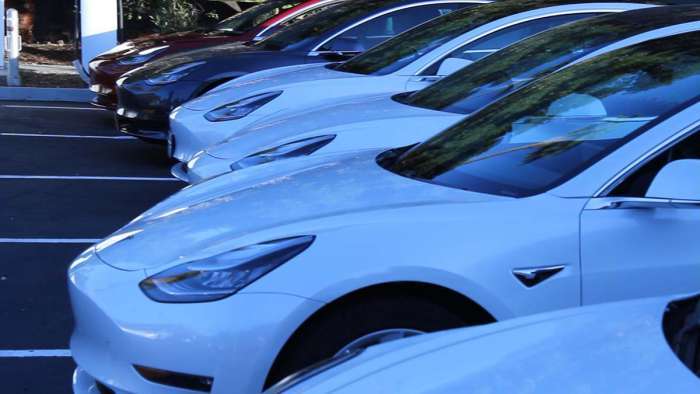
Tesla does have a number of potential solutions at their disposal, and some of them might even generate considerable revenue; however, several of those solutions are things that would be difficult or impossible for Tesla to do on their own.
See you in Part 2, where I discuss the potential solutions (with their benefits and risks) to Tesla's current Supercharger issues during the holidays.
About The Author
Eric Way focuses on reporting expert opinion on GM brand electric vehicles at Torque News. Eric is also an instructional designer and technical writer with more than 15 years of writing experience. He also hosts the News Coulomb video blog, which focuses on electric vehicles, charging infrastructure, and renewable energy. Eric is an active member of the EV Advocates of Ventura County, a volunteer organization focused on increasing the widespread adoption of electric vehicles. You can follow Eric on News Coulomb Youtube, on Facebook at @NewsCoulomb as well as on Twitter at @eway1978.

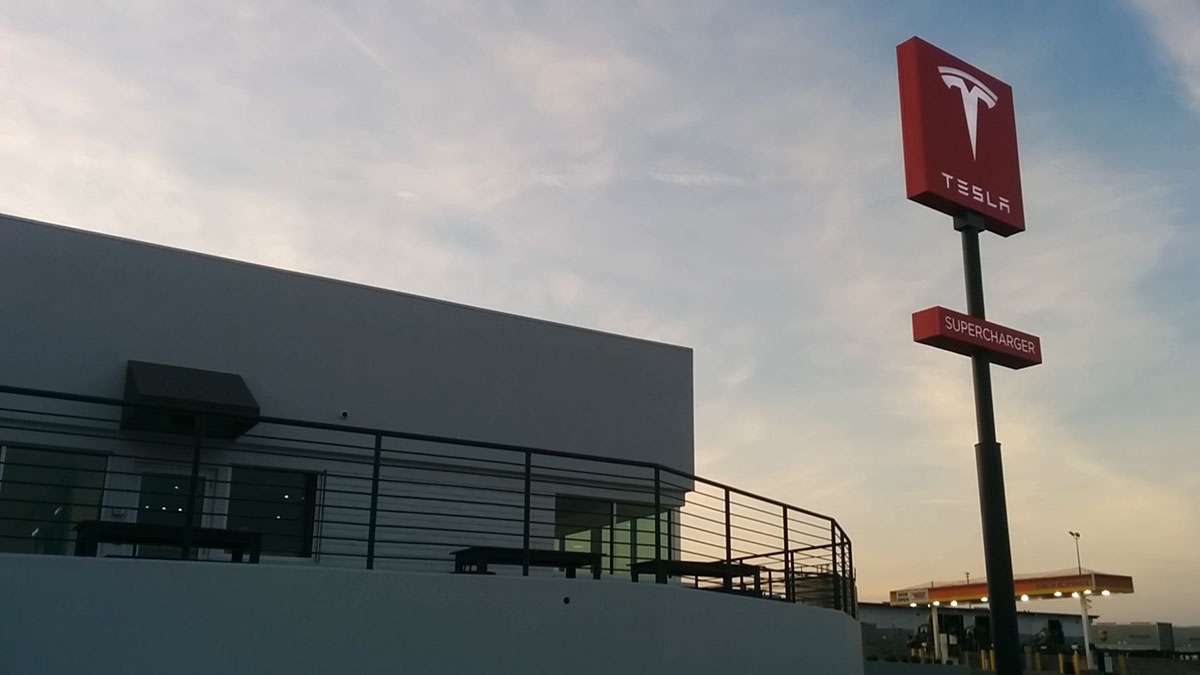




Comments
You state that Tesla "SCR can
Permalink
You state that Tesla "SCR can occur as low as 50% battery". This is far from accurate, at least on Model 3, which is by far, the most common Tesla. Model 3 peak charge continues until 55% and drops linearly to 0 charge rate @100%, so SCR is ~78%, which by your own data, is on the high end of SCR range. Any Tesla with low SCR is due to older technology, at a time when long range EVs didn't exist at all from other companies.
Tesla holiday charging is a
Permalink
Tesla holiday charging is a victim of it's own success.
Saying you didn't have to wait to charge your Bolt is a little like saying there were no lines to go see "From Justin To Kelly".
Lame. Keep your Chevy EV.
Permalink
Lame. Keep your Chevy EV. Teslas are better. Your public chargers suck compared to Tesla - fact.
That "Electrify America"
Permalink
In reply to Lame. Keep your Chevy EV. by stan kinaz (not verified)
That "Electrify America" charger cost you $0.50/kWh. Supercharger is $0.18. He can't admit he bought the wrong car and sucks at math.
PS Electrify America is the equivalent of anti-smoking campaign by Phillip Morris. Good luck w/dat.
There's a fatal flaw in your
Permalink
There's a fatal flaw in your story. That "Open Charger" you shared with the BMW can also be used by a Tesla.
Am I missing something...but
Permalink
Am I missing something...but nothing stops a Tesla from using a public non Tesla supercharger other than having the right adapter...so all these arguments really don't mean anything.
The only thing stopping me
Permalink
The only thing stopping me charging my Tesla at a "non-Tesla" charger is
A. They're slow
B. They're usually very expensive
I charge @ home 90% of the time.
The big mind blowing is when these guys realize that every home can charge every electric car.
The amount of missing words
Permalink
The amount of missing words and spelling errors in this article is horrendous. I had to stop reading and even if I finished the article, how could I trust anything written with clearly no editing process at all to ensure quality and accuracy of information. Gross.